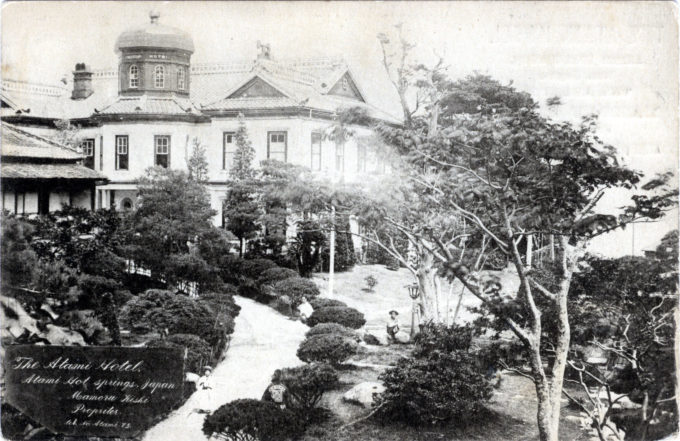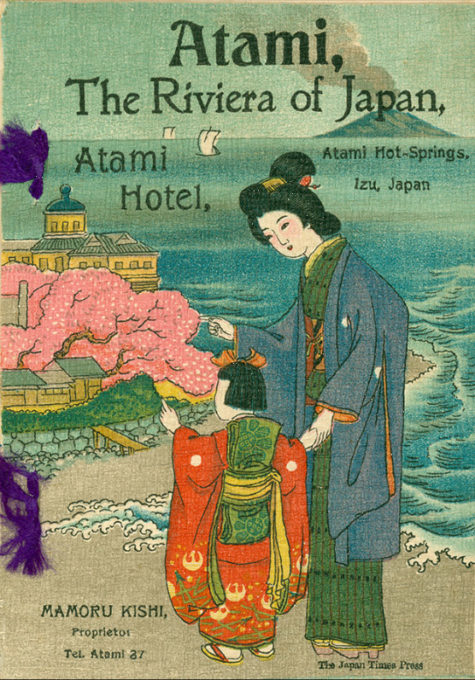See also:
Atami Hotel, Atami, c. 1940-1960
“Atami nestles cosily in a little V-shaped valley which reaches back into the hills from the sea and Sagami Bay, on the E. edge of the Izu Peninsula, in Izu Province. It is embowered in orange groves, camphor trees, and many flowers, which like the warm exposure and bloom riotously.
“The chief sight of Atami is the failing Geyser (Oyu, or ‘big hot water’), the largest of its kind in Japan … Dr. Rein, writing in 1884, mentions the geyser as breaking forth at regular intervals six times in 24 hrs., on each occasion for 1$ hrs. and rising to a height of 3-9 ft. The sinking of many wells (now prohibited) to the underlying volcanic vein, and the tapping (for baths and other purposes) of the hot stream, has so weakened the geyser that now it spouts but once every 9-10 hrs., first a quantity of steam accompanied by a sound of furious boiling, lasting sometimes for 1 hr., then a gush of hot water.
“At this time steam issues from many crevices in the rocks throughout the town; from the steam-pipes over which some of the people boil their food; from between the cobbles in the sts.; and from the various bath-houses directly connected with the underground stream. The effect is weird, and on a wet day, when the vapor hangs low, is decidedly suggestive of a region warmer and less satisfying than Japan.”
– Terry’s Japanese Empire, T. Philip Terry, 1914
“The curiosity for which Atami is noted is its geyser, Oyu, which breaks out once in every four hours in the middle of the town. It originally shot straight up into the air but is now partially enclosed, and an inhalation house (Kyuki kwan) has been erected for patients suffering from affections of the throat and lungs; the salt in which the steam of the geyser is rich being beneficial in such cases.
“The handsome house close behind the Kyuki-kwan, on the other side of the small creek which flows through the town, belongs to His Imperial Highness the Crown Prince. The chief productions of Atami are a beautifully delicate kind of paper called gampishi, literally ‘wild goose skin paper’; gampishi ori, which is a fabric made of this paper and used for clothing; and an excellent sweetmeat called ame.”
– A Handbook for Travellers in Japan, by Basil Hall Chamberlain & W. B. Mason, 1901



